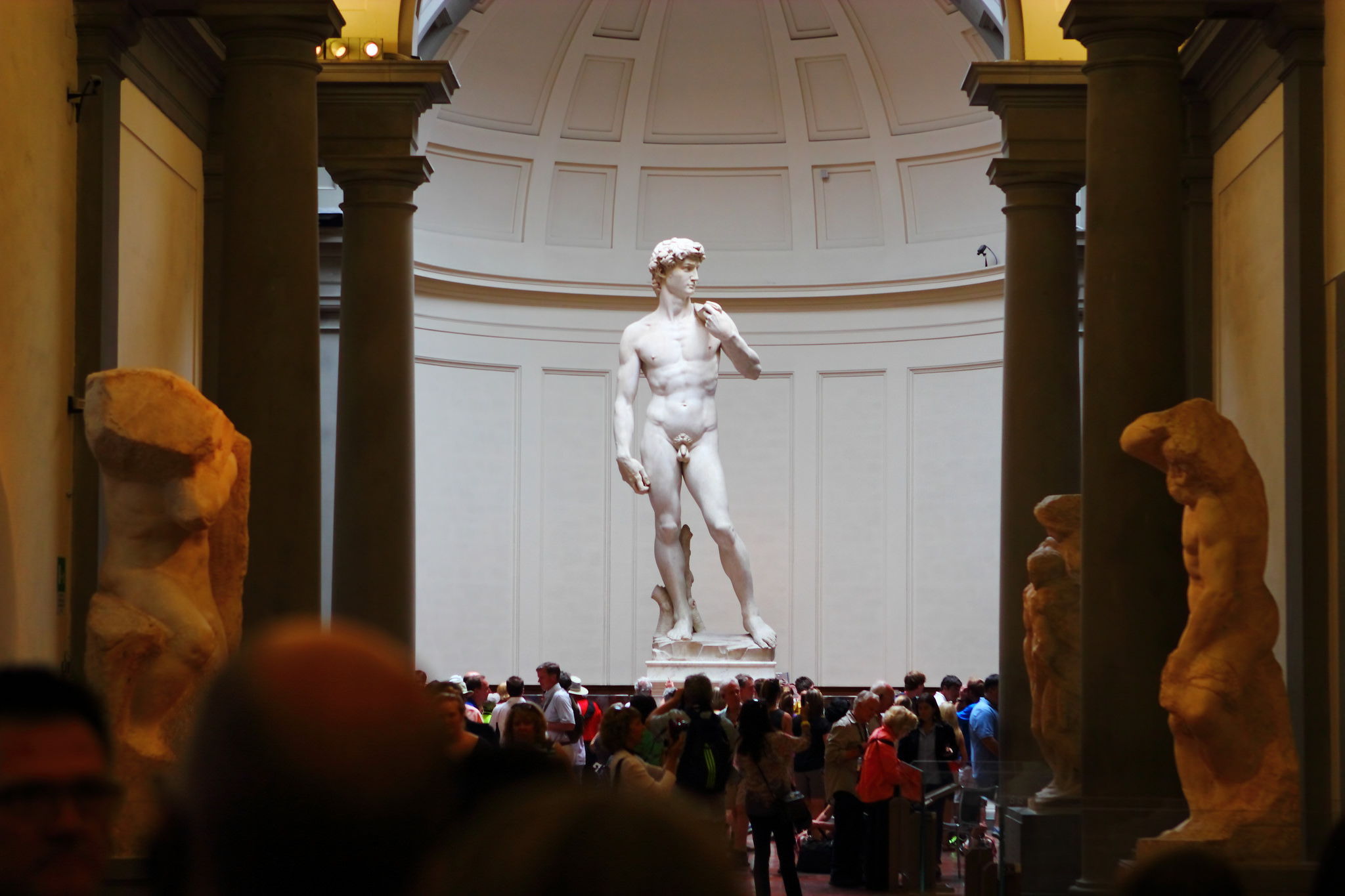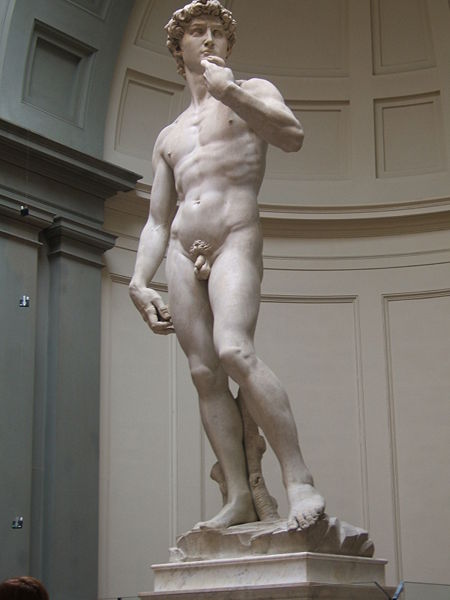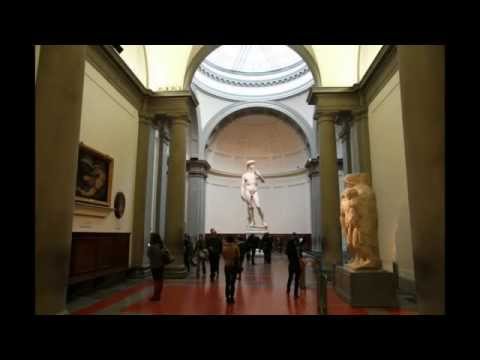5.25: David
- Page ID
- 103199
La Dra. Beth Harris y el Dr. Steven Zucker proporcionan una descripción, perspectiva histórica y análisis del David de Miguel Ángel.
Miguel Ángel, David, mármol, 1501—04, mármol, 517 cm (Galleria dell'Accademia, Florencia)

La Junta de Obras de la Catedral de Florencia encargó a Miguel Ángel que esculpiera a David de un enorme bloque de mármol sobrante de otro proyecto. Se le encargó la idea de que quedaría en un nicho en una de las tribunas de la catedral, muy arriba. Cuando Miguel Ángel se terminó, se dieron cuenta de que era demasiado hermosa para ser colocada en lo alto, por lo que se decidió construir una base para la escultura y colocarla justo frente al edificio principal de gobierno de Florencia (como ponerlo fuera del edificio capital en Washington DC).
Su belleza perfecta me recuerda al Pico della Mirandola, quien imagina a Dios diciéndole al hombre en la creación: “Tendrás el poder del juicio de tu alma para renacer en las formas superiores que son divinas”.
Aquí está la descripción de Vasari de David,
Tampoco se ha visto nunca una pose tan fácil, o alguna gracia para igualar eso en esta obra, o pies, manos y cabeza tan bien de acuerdo, un miembro con otro, en armonía, diseño y excelencia del arte.
—Traducido por Gaston du C. de Vere
¡El David de Miguel Ángel mide casi 17 pies de altura!

Recordad que la figura bíblica de David era especial para los ciudadanos de Florencia —simbolizaba la libertad y libertad de sus ideales republicanos, los cuales fueron amenazados en diversos momentos del siglo XV por la familia Medici y otros. Mira un video sobre la importancia de la figura de David para Florencia.
Colaboradores
- El David de Miguel Ángel. Proporcionado por: Khan Academy. Ubicado en: https://web.archive.org/web/20140215032449/http://smarthistory.khanacademy.org/Michelangelo-David.html. Licencia: CC BY-NC-SA: Atribución-NoComercial-CompartirIgual
- El David. Autor: Justin Ennis. Ubicado en: https://flic.kr/p/o5QC3m. Licencia: CC BY: Atribución


